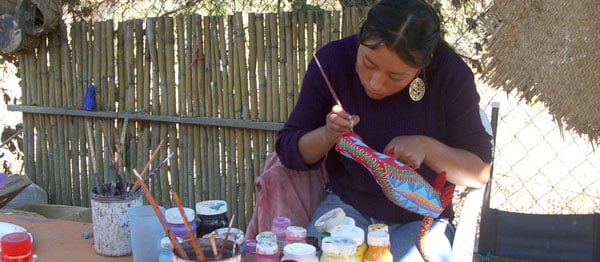The Zapotec people are a large indigenous group concentrated in Oaxaca in Southern Mexico. Their rugged homeland is comprised of deserts, rain forests, high mountain cloud forests, and Pacific coastline. Zapotec civilization during pre-contact times was very advanced with large cities, great architecture, large scale irrigation systems, writing and sculpture, and a complex religion. Many Zapotec people speak exclusively their Native languages and live an agricultural lifestyle. The traditional farm is known as a 'milpa'. Corn is grown along with a number of other traditional crops such as squash, beans, tomatoes, peppers, amaranth and sweet potatoes. These plants complement and enrich each other. Some hunting, fishing and wildcrafting is also practiced. Crafts are produced for sale to acquire the things they don't produce themselves.

Alebrije is a Zapotec word meaning 'delightful'. They are whimsical carvings of fantastical creatures. They are made from locally sourced copal wood. They're carved using hand tools - machetes, chisels, and knives. They were traditionally painted using analine paints made from local plant, mineral and insect dyes. Currently many artists employ acrylic paints to reproduce the traditional patterns on them. Alebrijes are produced by families units. Each family member has his or her own job.

Zapotec wool rugs are woven by hand on wooden looms. The wool is sheared, washed, carded, and spun by hand. Dying is done using homemade plant dyes. The designs are based on their own traditional design styles.

View Alebrijes.